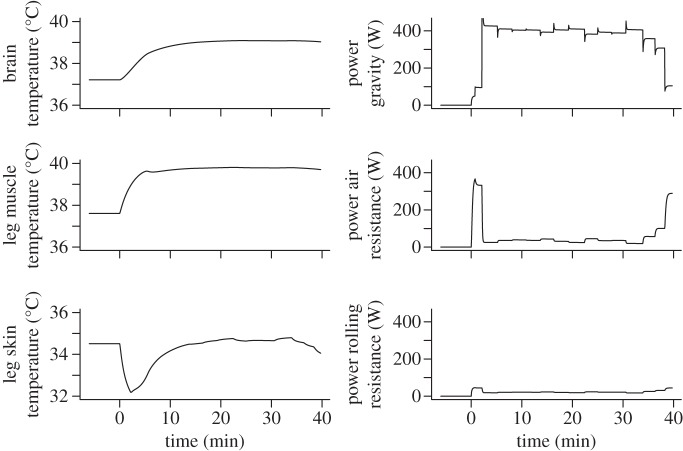Figure 2.
Predictions of the main fates of metabolic energy converted in the muscle during the mountain time trial. (a) The increasing temperatures of leg muscles and brain reflect heat generation. The increasing air velocity across the skin during the time trial leads to significant cooling, but this effect becomes less at steeper slopes, where speed is diminished. (b) Power (in Watts) expended against gravity, air resistance and rolling resistance. The sharp spikes in the power against gravity are caused by the sharp transitions to different grades caused by the low resolution (1 km) by which the slope of the road to Alpe d'Huez was known to us: the cyclist enters a section with a steeper grade with high velocity and is subsequently slowed down by the increased opposing gravitational force. The cyclist finishes after 15.5 km in 39 min 41 s.

